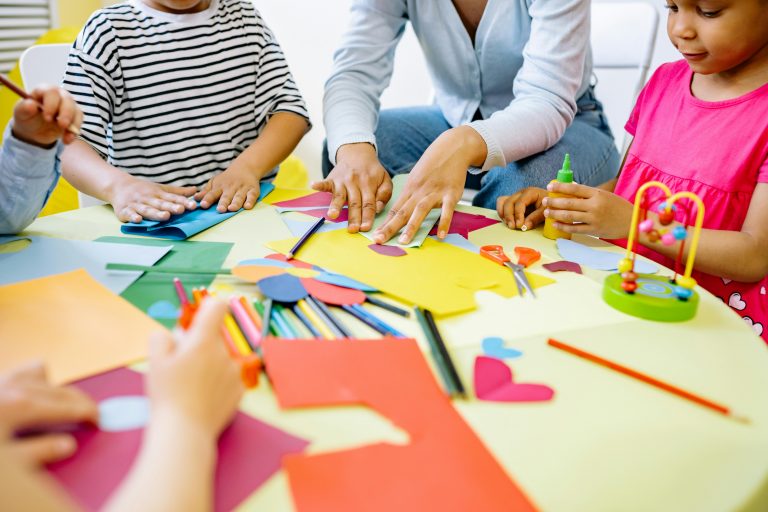While we love the aesthetics and style surrounding a black-and-white subject in art, introducing color to your art pieces and bringing vibrance to your theme adds another layer to the complexity and beauty that spark visual interest. And whether you dabble in the ranges of contemporary photography or express your artistic words through brushstrokes on a canvas, color schemes and varying chromatic palettes that complement and contrast with each other are elements that don’t go unnoticed.
However, one common trend we see many artists follow and explore is the concept of staying within their chromatic comfort zones and limiting themselves to color combinations and tones that they are familiar with using and expressing. And while there’s nothing wrong with staying in touch with what you find comfortable, we firmly believe that you’re holding your artistic talent and skill back from unlocking its full potential when you avoid more difficult color themes.
Colors Accentuate Flair
You see, none can deny that colors add creative flair to your work and blend the many visual elements into one coherent art piece. In fact, there is also meaning to be drawn from different hues, saturation, and value that bring more depth to your artwork. So, even if you refrain from treading difficult lines, you will most certainly take notice that some impressions and emotional associations are better narrated with more complex chromatic applications.
- Evoke Certain Moods And Emotions: Firstly, one of the many ways that colors accentuate flair into your creative expression is by evoking certain moods and emotions through the different shades and vibrancies. For example, whether you’re painting an accent wall for your bedroom or designing a personal t-shirt with heat transfer vinyl, brighter colors like rich reds and yellows will come off more inviting and friendly. In contrast, the same can be said when working with cooler colors like dark blues and grays to express calmness.
- Brings Life And Enhances Details: In addition to the emotional associations expressed through color, discovering more complex color themes helps bring life and enhances the many details present in visual art. We can observe this phenomenon best in natural landscapes, especially when noticing the changing of colors throughout the Autumn season, seeing leaves turn orange and the sky reach its peak golden hour. As a result, the same mechanisms are utilized in famous paintings and artwork to create visual excitement.
Reimagine Previous Art Pieces

Likewise, it’s not that easy for beginners to suddenly tackle complex subjects with varying color themes and chromatic expressions because exploring the far reaches of color theory requires skill and practice. So, before you consider yourself an expert in the many hues the natural world can offer, we suggest reimagining some previous art pieces to serve as basepoints for practice.
- Mesh Brighter Colors With Lighting: The meshing of brighter colors with lighting is an excellent aspect of coloring artwork that often goes overlooked due to the expansive details artists do their best to explore. So, you might want to try recreating sunlit designs from different angles to discover how well you can stretch the brightness present in a single shade. For reference, you can visit the modern takes on human dispositions that traverse the human figure in different naturalist conventions.
- Contrast Warmth With Shadows: At the opposite end of the spectrum, you will also find merit to the contrasting warmth of colors when pressed against the presence of shadows. The coolness of the shade can tone down even the most vibrant of hues, and you’ll find plenty of challenge to blend them well inside multi-layered art pieces that tiptoe on fine details. Sometimes, adding a wash over your work can bridge these colors together as well.
- Match The Dynamics Of Brushstrokes: Last but not least, an excellent way to work on your color theory skills and test the limits of what’s acceptable according to standards is matching the dynamics of brushstrokes. Whether it’s loose, firm, or mixed in different volumes, color can recreate the same styles by drifting between different strengths in hue. For example, one excellent modern execution of this would be the masterful animation of Arcane, wherein the blending of 3D models, 2D painting, aspects of cel-shading, and smoky textures create a dynamic and beautiful modern animation.
Enrich Your Artistic Expression With Command Over Color Schemes
Overall, artistic expressions and many visual art forms benefit from expansive color schemes, so before you double down on familiar palettes, we recommend enriching your knowledge of color theory to discover the many details formed around eccentric colorwork. Plus, even if colors aren’t exactly your primary medium for arts and design, the understanding of different color elements will help reinforce your artistic expertise and skills as a whole.




